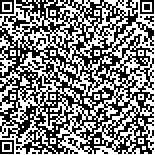本文已被:浏览 1959次 下载 3830次
投稿时间:2009-07-13 修订日期:2010-01-07
投稿时间:2009-07-13 修订日期:2010-01-07
中文摘要: 2009年6月我国淮河中下游地区连续出现三次飑线天气过程,作者应用常规和非常规气象观测资料、雷达和卫星监测、NCEP/NCAR 1°×1°再分析资料和NCEP/GFS分析资料,采用天气学方法和诊断分析方法,对三次飑线的生成环境和形成机制进行对比分析。结果表明:三次飑线具有类似的500 hPa环流形势、较强的不稳定能量积累、低层适量的水汽输送、相似的不稳定层结。在低层辐合抬升、高层干冷空气侵入和较强的风垂直切变产生次级环流动力作用下,不稳定能量释放,发展成有组织的飑线系统。通过卫星雷达的监视,可以较好地预报飑线的影响。
Abstract:The three squall lines happened in the middle and lower reaches of the Huaihe River in June 2009. The conventional and non conventional data, radar and satellite observations, NCEP/NCAR 1°×1° reanalysis and NCEP/GFS analysis data are used in the paper, to contrast and explore the genesis conditions and mechanisms for these squall lines. The results show that the three squall lines have similar circulation pattern at 500 hPa, the stronger accumulating unstable energy, the suitable transfer of water vapor in the low level, and thus forming the similar unstable atmospheric stratification. In the above situations the convergence rising occurred in low levels, the dry and cold air intruding in high levels and the stronger wind vertical shear made the cold and warm air writhing upper and down, the unstable energy was released, thus organized squall line systems were formed. The influence of the squall lines can be monitored and forecasted by the satellites and radars.
文章编号: 中图分类号: 文献标志码:
基金项目:国家科技支撑计划“亚洲巨灾综合风险评估技术及其应用研究”(2008BAC44B03)的“亚洲台风 暴雨巨灾风险评估技术及其应用研究”项目资助
引用文本:
曲晓波,王建捷,杨晓霞,刘鑫华,2010.2009年6月淮河中下游三次飑线过程的对比分析[J].气象,36(7):151-159.
QU Xiaobo,WANG Jianjie,YANG Xiaoxia,LIU Xinhua,2010.Contrast Analysis of Three Squall Lines in Middle and Lower Reaches of the Huaihe River in June 2009[J].Meteor Mon,36(7):151-159.
曲晓波,王建捷,杨晓霞,刘鑫华,2010.2009年6月淮河中下游三次飑线过程的对比分析[J].气象,36(7):151-159.
QU Xiaobo,WANG Jianjie,YANG Xiaoxia,LIU Xinhua,2010.Contrast Analysis of Three Squall Lines in Middle and Lower Reaches of the Huaihe River in June 2009[J].Meteor Mon,36(7):151-159.

